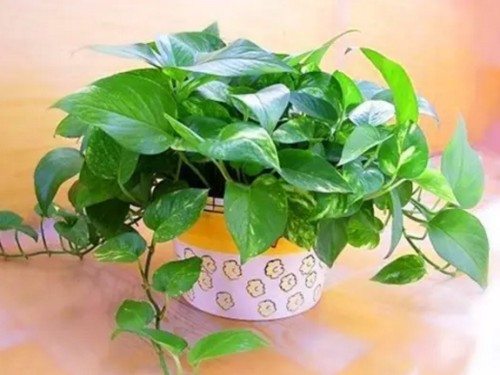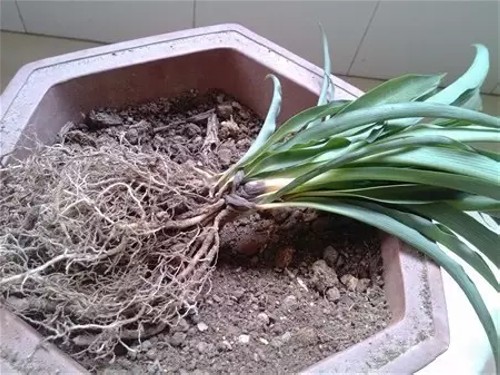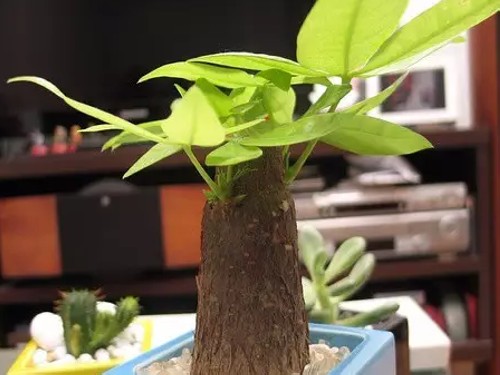What's going on with the rotten root of green apple?
Green radish is called by flower friends as the best plant to grow. When it comes to hydroponic flowers, we may think of green radish for the first time, because green radish can not only be cultivated in soil, but also cultured in water. Green radish has always been called the best plant by flower friends, but there are also flower friends who encounter rotten roots of green radish. So what about rotten roots of green radish? The treatment method is basically the same, simply said that is to re-cuttings, below we have a look at the specific.

First of all, let's look at the reasons for the rotten roots of green radish!
1, the temperature is too low
Green radish is a heat-loving plant, the most suitable growth of 15~25℃, winter can not be lower than 10℃ to safely winter. When the temperature is too low, the growth of the roots will be inhibited and the roots will rot easily.
2. Too much watering
Green radish likes water, but it doesn't mean it needs more water. Soil-raised and water-raised different, water-raised often change water to ensure that there is enough oxygen in the water can be. Soil watering is simply to provide water for the growth of plants, when watering too much, the soil will lack oxygen, roots do not get oxygen, rot occurs.
3. Poor water quality
Another important reason for rotten roots is that the water quality is dirty, there are a lot of bacteria in the water, long-term in this environment, the growth of roots does not get enough nutrients, it is easy to rot roots.
4. Fungal and bacterial infections
Bacterial infection is unavoidable, and plants are susceptible to fungal attack in humid environments.
Whether it is soil-grown or hydroponic green radish will have rotten roots, because green radish is a herb, so once rotten roots, there is no way to say that they recover, but because green radish has the advantage of easy translation, so most are to take the method of re-cutting.
1. Soil-grown green radish
Compared with hydroponic green radish, soil cultivation is not easy to rot roots, but because some pots have poor water permeability, coupled with uncontrolled watering by flower friends, it leads to long-term ponding of pot soil, and finally green radish rot roots, flower friends should re-prepare new media (peat, nutrient soil can be) to pull out the original green radish, cut off the rotten roots, clean, and then apply a layer of charcoal powder, in order to disinfect to prevent infection, and then dry, re-cutting.
2. Green radish cultivated in water
Most of the rotten roots of green radish cultured in water are caused by not changing water in time, but the blackening of roots is not rotten roots. Rotten roots are the root melting water and smelly. Once rotten roots are rotten, cut off the rotten parts, then change new water, clean the bottle, and re-culture can be done.
The key points of green radish conservation:
1. Change water frequently. If you cultivate green radish, it is very necessary to change the water frequently. Generally, it is changed once every two to three days. The reason is that green radish has extremely high requirements for water quality. Adding nutrient solution is also necessary to make green radish glow.
2) Appropriate temperature. Green radish safe winter temperature above 10℃. At room temperature above 20℃, green radish can grow normally. Excessive temperature difference will affect the growth of green radish. Also be careful not to leave leaves near heating equipment.
3. Selection of water quality. Clean tap water or purified water to cultivate green radish, the right choice of water quality, because it contains a lot of minerals.
Time: 2019-06-01 Click:
- Prev

Why do potted orchids rot? What about the rotten roots of hanging orchids?
Cymbidium is a fleshy root, soil culture, hydroponic culture are very beautiful, but once the rotten roots, the whole plant roots absorb nutrients, unhealthy roots will also infect diseases and insect pests. The rotting root of Cymbidium is mainly caused by root injury or waterlogging and excessive fertilization. When changing and dividing the basin, the root must be hurt as little as possible.
- Next

How to remedy the rotten roots of potted rich trees
The rich tree is a popular potted plant, which can be sown when the temperature is above 20 ℃, and the germination rate is still very high. Compared with the cuttage potted plant bought, the rich tree sown by oneself is easier to maintain. Rich trees do not like water, and too much watering will cause rotten roots. But the plants show slowly.
Related
- Fuxing push coffee new agricultural production and marketing class: lack of small-scale processing plants
- Jujube rice field leisure farm deep ploughing Yilan for five years to create a space for organic food and play
- Nongyu Farm-A trial of organic papaya for brave women with advanced technology
- Four points for attention in the prevention and control of diseases and insect pests of edible fungi
- How to add nutrient solution to Edible Fungi
- Is there any good way to control edible fungus mites?
- Open Inoculation Technology of Edible Fungi
- Is there any clever way to use fertilizer for edible fungus in winter?
- What agents are used to kill the pathogens of edible fungi in the mushroom shed?
- Rapid drying of Edible Fungi

